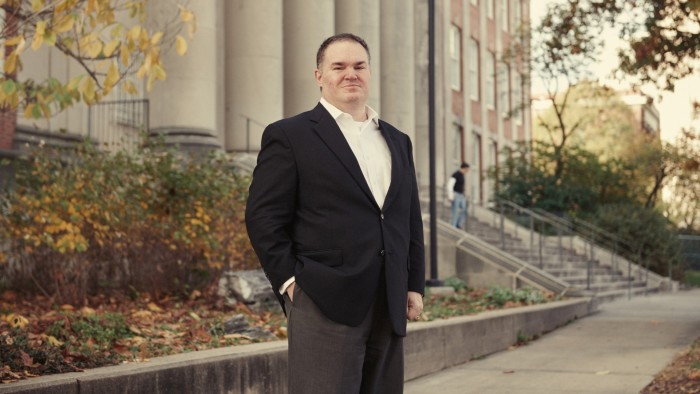The prolonged downturn in private market returns has hit one investor group particularly hard: Ivy League university endowments.
Many of the nation’s major university endowments allocate large portions of their portfolios to private equity and venture capital, but for the second year in a row, this was below the university average, with prominent universities such as Yale and Princeton allocating large portions of their portfolios to private equity and venture capital. It lags far behind larger universities. The once lucrative asset class has been hit by a sharp decline in trading and stock listings.
Top endowments have long used aggressive exposure to private investments to pursue excess returns deemed out of reach in the public markets. Currently, these investments have not yet paid off, so some large endowments like Princeton University are issuing bonds to meet their funding needs, according to the New Jersey Educational Facilities Authority.
Six out of eight Ivy League universities reported returns lower than the higher education average of 10.3% in the 12 months ending in June, according to investment consultancy Cambridge Associates. Yale University and Princeton University had the worst yields at 5.7% and 3.9%, respectively.
This underperformance follows an even weaker performance in 2023, when Ivy League schools were unable to match the industry average of 6.8%. Yale University rose 1.8% last year, while Princeton University fell 1.7%.
The Ivy League’s endowment, one of the world’s wealthiest, has been largely driven by aggressive investments in illiquid but high-yield alternative investments that have fallen victim to a prolonged high interest rate environment. It reported mediocre earnings.
And this modest return comes as public markets are soaring, with the S&P 500 stock index up 57% over the past two years and bond rates frequently returning more than 4%. .
Most Ivy League endowments had allocated more than 30% of their assets to PE and VC through the first half of this year, and in the case of Yale and Princeton, at least 40%, according to consulting firm Old Well Lab. In contrast, a Cambridge Associates study of 121 university endowments found that their allocations to PE and VC averaged 22% over the same period.
The struggle by elite university endowments to generate excess returns is raising new concerns about their investment models, which have been emulated by asset allocators from sovereign wealth funds to community foundations around the world.
Britt Harris, former chief investment officer of the $78 billion University of Texas/Texas A&M Investment Management Company, the nation’s largest university endowment, said most Ivy League endowments are negative or in the low single digits. said it was a “huge abnormal situation”. Last year, the risk-free 10-year Treasury bond yielded more than 4%.
“People underestimate how volatile some of these private investments are,” Harris said.
The Elite University Endowment, led by Yale University, spearheaded the effort to embrace private markets 40 years ago, when many institutions were under stress due to high inflation and volatile stock performance.
“The cost of operating a university has gone up significantly and its income is down,” said Hunter Lewis, founder of Cambridge Associates and co-inventor of an investment model focused on alternative assets. “Donor organizations recognized that they had to do things differently.”
This strategy has paid off, as the Ivy League universities’ prestige and strong alumni networks allow them to work with talented PE and VC managers who enjoy better performance than public stocks and bonds.
Yale’s endowment, which allocates 45% to PE and VC, returned 10.3% annually over the 20 years ending in June. This compares to 8.5% for a benchmark portfolio of 70% U.S. stocks and 30% bonds over the same period.
Roger Vincent, founder of Sumation Capital and former head of private equity at the Cornell University Endowment, said, “I still believe that everyone should have the largest possible allocation to private equity.” “There is,” he says.
But Ivy League endowments continue to increase their investments in private markets, and that exposure could come under stress during a recession.
IPOs and mergers and acquisitions, the main exit channels for PE and VC, have been subdued for nearly three years since the Federal Reserve raised interest rates and kept them high to fight inflation.
This has cooled the private market and the funds built up in it when the stock market took off. Meanwhile, IPOs, a key vehicle for companies to exit private ownership and extract investment returns, have remained about 30% below average over the past few years.
Matt Mendelsohn, chief investment officer at the Yale University Endowment, said in a statement last month: “Given the large allocation to private assets, the private asset exit market in particular has been weak during periods of strong public market performance.” We anticipate that there will be delays during this period.”
Many Ivy League endowments are now scaling back on alternative investments, just as their smaller peers are starting to enter the space.
Brian Neal, chief investment officer of the $2 billion University of Nebraska Foundation, plans to increase its allocation to private markets from less than 30% to 40% within the next three years, helping the foundation meet its annual return goal of 9.5%. He said he plans to increase the number.
“I think it’s going to be a very productive period for financial institutions that have the capacity and liquidity to consider investing (in the private market),” he said.
Neal added that UNF is taking steps to control risks arising from its forays into private equity and venture capital.
Sumation Capital’s Vincent said it’s too late to cut some of the Ivy League’s endowment allocations to private markets.
“What actually happened was that (these donations) were reaping huge benefits from private equity,” he said. “I didn’t want anyone to leave the party.”


